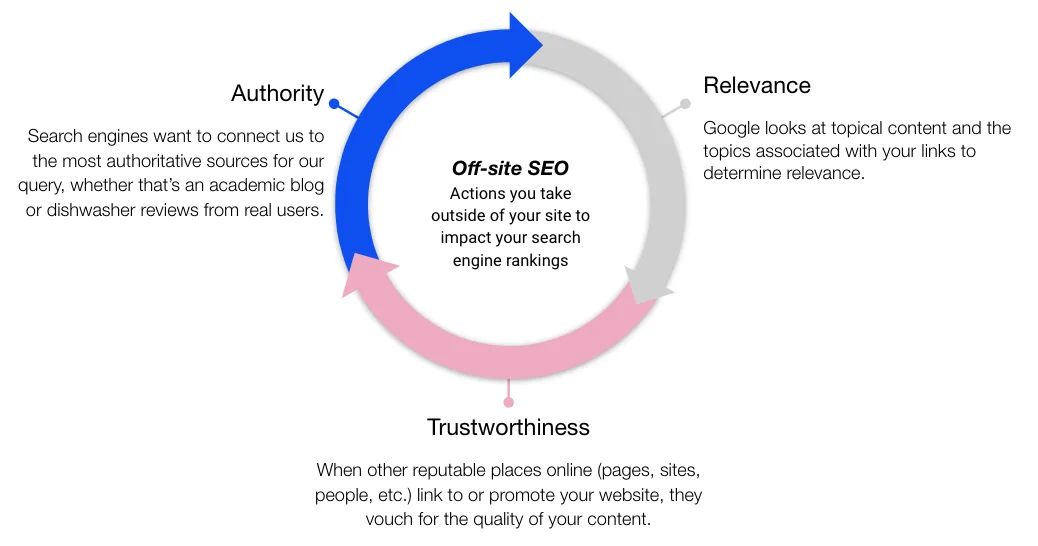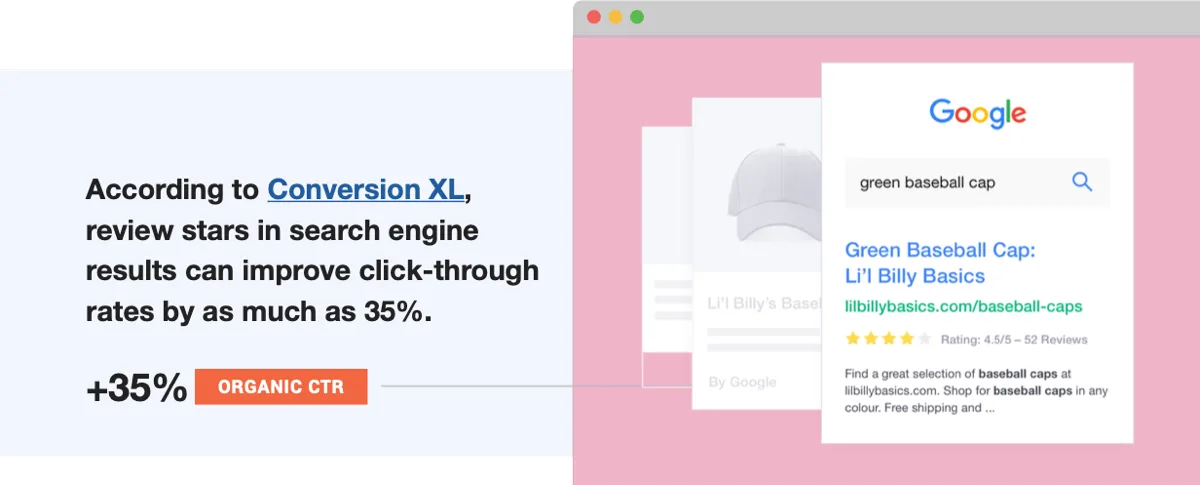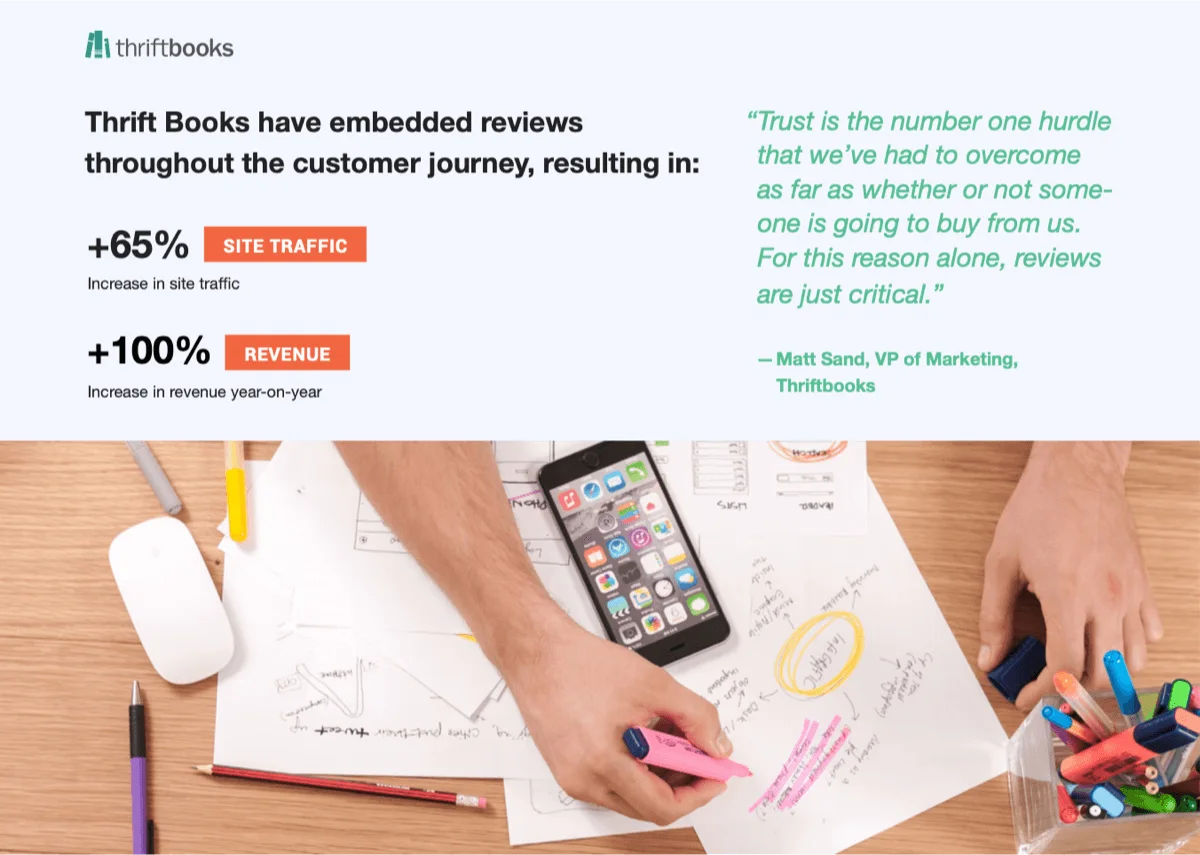
In this practical guide, we’ll show you exactly how to turn your reviews into better business results by putting them to work throughout your entire marketing strategy.
I rely on reviews. You rely on reviews.
We all rely on reviews.
In fact, consumer behavior has evolved such that shoppers the world over are relying on reviews from their fellow customers to find the most up-to-date and accurate information about businesses in their local communities and beyond.
So, if you’re wondering whether you could be doing more with customer reviews, know this: reviews can provide your business with so much more than feedback on your products and services. They can help you ensure a consistent reputation and establish credibility.
They're a powerful marketing engine in their own right. Customer reviews are a way to build trust in your brand, and turn that brand trust into measurable ROI through increased web traffic, sales, and revenue. And they help you achieve what every business strives for — to acquire customers and cut costs at the same time.
In this practical guide, we’ll show you exactly how to build a customer reviews and testimonials strategy and include it throughout your customer journey mapping strategy to see better business results by putting them to work wherever makes the most sense.
And on the off chance you’re totally new to the world of reviews, we’ll start with a quick overview of their many benefits, and how they work together to propel business growth.
Why every business needs customer reviews and testimonials
We’ll keep this brief — the virtuous cycle of collecting reviews goes something like this:
1. Build trust in your brand and broaden brand influence by collecting and responding to reviews.
Reviews are an opportunity for anyone familiar with your brand to publicly share what they love about your products, services, and customer experience. So, having reviews publicly available conveys to potential customers that you’re safe to do business with and helps you establish credibility.
Once you have some reviews about your business, you can:
2. Attract new customers by using reviews, ratings, and testimonials throughout your marketing strategy.
Showing off your customer reviews is how you turn your hard-earned brand trust into measurable ROI. And no growth marketing strategy is complete or optimized without customer reviews.
Whether you dream of becoming the search result they actually click, driving more traffic with your emails and ad creative, or converting more browsers into buyers on your site — social proof like reviews, star ratings, and testimonials can help with that. Customer journey mapping can't start without the moment you attract a new customer and reviews are one of the best ways to do this.
To meet the expectations of all the new customers you’ll attract from showing off your reviews, you’ll need to:
3. Tap into the goldmine of fresh consumer insights within your reviews.
You’ve built a trusted brand. You’ve attracted more customers than ever before by exuding trustworthiness in all of your marketing. Now you need to understand what all of your new customers thought about their experience with your brand. Insights are key to a successful customer reviews and testimonials strategy.
Reviews act like a window into the minds of your customers, allowing you to discover exactly what they want — and deliver it — so you can build customer loyalty, get even more customer feedback, and continue using that feedback to attract new customers.
Sounds good, right? It all begins with getting reviews for your business so you can start showing off the trust in your brand. This also helps you cut costs by alleviating the need for third party consumer insights surveys, focus groups, and more by getting you business insights directly from the source — your customers.
This is especially easy for businesses built on major eCommerce platforms to get up and running thanks to Trustpilot’s native integrations for Shopify, BigCommerce, WooCommerce, Magento, PrestaShop, Shopware, and OpenCart.

15 Ways to build an effective customer reviews and testimonials strategy
Once you’ve collected some reviews about your business, you can start showcasing the voice of the customer throughout your marketing strategy to increase organic traffic, dial up your paid digital campaign performance, establish credibility, and ultimately win more customers.
Improving organic SEO with customer reviews
With 91.5% of organic traffic going to sites listed on the first page of search engine results, we can’t overstate how important your organic search ranking is when it comes to attracting new customers.
With that in mind, here are five ways you can use customer reviews to improve your organic search rankings.
1. Build strong off-page SEO by collecting reviews on a third-party platform.
Off-page SEO describes any actions you take to build up a digital footprint outside of your actual website — whether it’s building credible backlinks to your pages, staying active on social media platforms, or even creating a profile on a third-party review platform like Trustpilot.

Even though search engine algorithms are always evolving, the experts at Moz suspect that off-page SEO considerations like relevance, trustworthiness, and authority carry more than 50% of the ranking factor weight.
Fortunately, building up your online presence with third-party reviews can help your business tick all three of those boxes.
2. Drive more referral traffic from your Trustpilot business profile.
On top of the off-page SEO benefits for your actual website, creating a profile on Trustpilot can also lead to a huge spike in referral traffic.
That’s because when someone searches for reviews of a brand, they’re likely to find that brand’s Trustpilot business profile page at the top of the search results. Why, you ask?
We don’t mean to brag, but Trustpilot’s domain authority is strong. So, the more reviews you collect — and the more you enrich the content on your business profile page — the easier it will be for search engines to associate your brand with ours, and show your presence on Trustpilot right at the top of search results. This helps you gain brand reach expansion, with new customers regularly finding your site.
This could be your competitive advantage since referral traffic is so often overlooked — even though it’s a free source of qualified leads, and can even improve your organic search performance.
3. Get more organic traffic by displaying customer reviews on your website.
Featuring customer reviews on key landing pages is easy to pull off with review widgets, and this small addition to your website can improve how often your pages show up in organic search results.
That’s because reviews are a form of user-generated content, and UGC is SEO gold:
Reviews increase the amount of text on each page. This extra text makes your page more valuable in the eyes of Google because you’re offering them more context for what the page is really about — and whether it should surface for the user’s search query.
The ratings associated with your reviews help Google understand the quality of your products and services. At the end of the day, Google wants to show the most reputable search results in hopes of delivering the best experience to their users.
Review text adds fresh dynamic content to pages that might not otherwise get frequent updates. This tells Google that the information about your business is recent and up-to-date, and is therefore worth surfacing for the user’s search query.
These elements work together to help Google understand your website. Over time this can lead search engines to show your pages in search results more frequently, improving brand reach expansion, and driving larger volumes of high quality traffic to your site, and ultimately acquire customers.

4. Earn review snippets in organic search with product reviews.
When marketers think about star ratings in search results, paid listings usually come to mind — and we’ll get there in the next section. But most marketers don’t realize they can also earn star ratings on their organic search listings and appeal to those savvy shoppers who might be less inclined to click-through an ad.
As it turns out, collecting Product Reviews can help you qualify for review snippets in organic search.
And those shiny gold stars on your listings can help attract more attention to your product pages, and even improve your click-through rates by up to 35% in organic search. Many of today's shoppers are used to seeing them on a trusted brand's listing, so it can be difficult to establish credibility without them.
It’s not hard to do — our range of eCommerce integrations allow you to make your Product Review data discoverable to search engines in just a few clicks that add some simple code (aka schema markup) to your product pages. This allows search engines to easily get a sense of your products’ overall ratings, and determine whether you meet their requirements for displaying review snippets.
If your review stats meet Google’s requirements, your product pages could appear with performance-enhancing review snippets in the SERPs.

5. Rank for long tail search queries with product reviews.
Collecting product reviews can also amp up the SEO power on each of your product pages, and help you rank for a broader range of relevant keywords.
It’s pretty straightforward. Allowing customers to leave reviews about your individual products — and putting them front and center on your product pages — can improve your site’s visibility for long tail search queries, with no copywriting effort on your part.
Try as you might, thinking of every possible descriptor, use case, or problem your product solves can be difficult to say the least. Thankfully, product reviews let your customers become the copywriters, enabling them to share their own unique experiences with your products.
The icing on the cake is that all this happens automatically — no extra copywriting or dynamic content strategy creation for you.
Enhancing paid digital campaign performance with customer reviews
Today’s consumers have seen it all — and many of them don’t want to see ads or slick marketing messages anymore. In fact, more than 75% of consumers regularly use an adblocker.
To make matters even more challenging for digital marketers, research shows fewer than 3 in 10 consumers report a solid level of trust towards digital advertising channels. This makes an effective growth marketing strategy a lot more difficult than it was in the past.
Fortunately, customer reviews and star ratings can enhance your digital campaign performance on the channels that have the biggest influence on consumer’s purchasing decisions.
6. Qualify for Google Seller Ratings to improve Google Ads performance.
A close relative of review snippets in organic search, Google Seller Ratings are a one-stop-shop for:
Adding a healthy dose of social proof to your paid search listings.
Making your business stand out from the competition.
And increasing click-through rate on your Google Ads campaigns.
A higher click-through rate often leads to increased sales, and will usually improve your Quality Score — meaning you’ll get traffic at a lower cost per click. This in turn gives you a lower cost per acquisition, and frees up more budget for the rest of your business. What business doesn't want to cut costs?
Just keep in mind that whether Google Seller Ratings display on your paid search listings is up to Google’s discretion in line with their latest guidelines — which tend to stipulate that a business must have a certain number of reviews and a certain aggregate rating before those shiny gold stars will appear below your Google Ads.
Once you do earn them though, your Google Seller Ratings will appear in Google search results, Google Shopping listings, and even on Google search partners’ listings.
So if you ask us, it’s worth setting yourself up to qualify for them.
7. Enhance your retargeting campaigns with customer testimonials, reviews, and ratings.
Retargeting campaigns can straddle a range of platforms using paid ads to re-engage potential customers who have visited your website or social media profiles.
No matter which platform you’re using to run a retargeting campaign, you can see a performance improvement if you include your reviews and ratings in the ad creative. This can look like:
Quoting an individual customer review.
Using your overall rating in your ad creative.
Showing off how many customers have rated you highly.
The best part? Highlighting your reviews in ad creative can be done without design skills (or even an in-house designer) with some help from Trustpilot’s social media Image Generator.
With retargeting, you’re putting ads in front of people who have some existing relationship with your business. The extra social proof you add to your retargeting creative might be the deciding factor that nudges customers to purchase from you.
Getting more from your email marketing with the voice of the customer
Though it’s a tough number to pin down, email marketing experts estimate that the average person sends and receives 126 business emails per day. That’s a whole lot of emails.
It’s easy to see why the average open rate for emails is about 22% — and why it can be so challenging to cut through the noise with email marketing.
Here are four ways you can let the voice of the customer do it for you.
8. Boost email click-through rates by adding customer reviews and testimonials.
Every improvement in email click-through rate is going to drive more qualified traffic to your website and increase the odds of a conversion. So you might be interested to know that customer reviews can improve the click-through rate in all of your marketing emails.
Unlike channels with strict word counts and requirements for visual creative, with email you’re free to be creative with how you show off your reviews. You can even use them as the entire basis for different types of email content and CTAs.
Whether you’re drafting a monthly newsletter, a seasonal product promotion, or a dynamic remarketing campaign – highlighting a customer review that’s directly related to your offer puts the social proof your customers crave right on a silver platter, and increases the odds that they’ll click-through to your landing page, and ultimately convert.
And with 82% of shoppers reporting that ratings and reviews in email marketing can make them more likely to purchase, that’s pretty promising.
9. Let customer reviews do the talking in your welcome campaigns.
Welcome campaigns are your first opportunity to build a direct relationship with a future customer. Most of your email signups probably haven’t made a purchase yet, and they could even be brand new to your business.
This is your opportunity to convince them you’re a brand they can feel comfortable buying from — and it’s the perfect time to let your satisfied customers do the talking.
Think of your reviews as your dynamic content strategy. A database of nuanced content to make your campaigns as compelling as possible to your email audience segment.
When you’re in the early stages of building a relationship with your future customers, it’s a good idea to:
Include a relevant customer review in each email, whether it’s about a specific product or your customer experience in general.
Feature your top-rated products and services based on your reviews.
Show off your brand’s personality by curating some surprising or funny customer reviews.
This is just a sampling of the creative ways you can make a first impression through your customer reviews and generate warm responses to your email campaigns. Content is one of the biggest needs for marketing teams and having constantly fresh dynamic content is a huge win and time saver.
10. Show off your trustworthiness in the email header, footer, and subject line.
Every email you send should include some proof of your trustworthiness. One easy way to achieve this is by including your star rating to your email template’s header, or adding a customer testimonial in the footer.
With email open rates hovering around a modest 22%, it’s also in your best interest to lead with social proof right in the subject line. Here are some sample ideas to get you started:
- "Our top reviewed products this month."
- "Thank you for making us a 5 star company."
- "5 ways we’ve used your reviews to improve our customer service."
- "Meet Sue, our top customer service rep."
- “We thought our teapots were great, your feedback has made them even better!”
- “The products you love.”
11. Abandoned cart emails are more effective with customer reviews.
No matter how watertight your online shopping journey is, abandoned carts are bound to happen.
According to the experts at Klaviyo, the average cart abandonment rate is about 70% on desktop and a whopping 85% on mobile — so it’s not surprising that abandoned cart email flows have become so popular.
Many retailers rely on special offers and promotions in these email campaigns to lure would-be customers back to their website, but adding a testimonial, review, or rating can be more than enough to bring them back without compromising your precious margins.
So if you’re putting together an abandoned cart email flow, consider including a few reviews about your customer experience or best-selling products to reassure any hesitant shoppers out there that your business is not only safe to buy from — but that there’s plenty to love about your brand.
No matter what type of email campaign you’re running, it’s easy to feature Trustpilot reviews with our integrations for major email providers like Klaviyo, Fresh Relevance, and Movable Ink.

Improving website conversion rates by putting customer reviews front and center
Today, 89% of consumers check online reviews throughout the online shopping journey. So, by the time a potential customer lands on your website, chances are they’ve already formed a first impression about your brand.
If you want to make sure that first impression leads to a conversion, it’s a good idea to provide all the reassurance they need to click “BUY” right on your website.
Here are four ways to improve your conversion rate with customer reviews on your website.
12. Use reviews to make a stellar first impression on your homepage.
When you improve the trustworthiness of your marketing campaigns, you’re likely to drive a lot more qualified traffic to your website. If your goal is to acquire customers, your website should be just as trustworthy as the marketing materials that led them there.
When it comes to website optimization, the homepage is often overlooked in favor of product pages and the checkout page — and that’s a missed opportunity.
Even if the majority of your site visitors arrive via a specific landing page, there’s a good chance they’ll still want to check out your homepage, especially if they’re unfamiliar with your brand.
With this in mind, try to highlight customer reviews as much as possible on your homepage. You could:
Showcase the quality and quantity of your reviews — for example, “We received 2,365 reviews this year, and 95% of customers gave us a 5/5”.
Feature 3-5 recent reviews to show off what your others love about your customer experience.
Round up your most reviewed or highly rated products and services — for example, “Here are some products our customers gave 5 stars”.
Remember, your homepage is where site visitors turn to find trust signals and other social proof for your brand — so don’t miss this opportunity to easily build trust with curious customers by showing off a highlight reel or some summary statistics about your customer reviews.

13. Add review widgets to product pages to make the buying decision easy.
We’ve already established that product reviews are an SEO secret weapon — but they can also make conversions skyrocket on your product pages.
According to the experts at Shopify, 79% of online shoppers trust information shared in product reviews as much as a personal recommendation. And other studies have revealed that product reviews are 12x more trusted than manufacturer or product descriptions.
In short, showing relevant reviews on product pages makes the buying decision easier for hesitant shoppers.
That said, not all reviews carry the same weight.
Research shows that shoppers want to see real product images from other customers (aka user-generated content) when they look at product reviews:
Millennials trust user-generated content 50% more than traditional media and think it’s 20% more influential on their purchasing decisions.
Consumers are 3x more likely to perceive user-generated content as authentic compared to content created by a brand.
So if your goal is to increase conversions on your product pages, make sure your product review provider gives customers an opportunity to share their own photos.
If you display these on your product pages, your conversion rate is sure to thank you.
14. Add star ratings to the site header and footer to make every single page more trustworthy.
Depending on what they searched to find your business, customers can land on almost any page on your site from the SERPs. With this in mind, every page is an opportunity to convince them to make the critical decision to purchase.
The easiest way to make sure your trustworthiness comes across loud and clear — no matter where visitors land on your site — is to add your star rating to your header or footer.
It’s a small change that can make a big difference.
15. Reduce your exit rate by highlighting reviews and ratings on exit pages.
Every journey has a start point and an end point — and if that end point isn’t the order confirmation page, you should take every opportunity to increase your conversion rate.
First, identify any pages with high exit rates by checking out your exit page performance in Google Analytics and noting which ones have high traffic and a high exit percentage.
With exit pages, it’s worth taking the time to look at the actual page and see if you can spot a problem:
Are there enough calls to action on those pages to keep people on the website?
Is the page a dead end on the website?
And of course, are there any customer review sentiments that might help keep people on this page?
Once you’ve ruled out other potential issues, it’s worth exploring any opportunity to show off relevant reviews on your exit pages — and Trustpilot’s Review Tagging feature makes this easy.
Here’s an example.
If your Delivery and Returns page has a high exit rate, you might start tagging reviews that mention delivery or returns so you can easily filter reviews by those keywords. This should make it easy to find a testimonial or two that sings your praises about delivery and returns — so you can feature them on your Delivery and Returns page.
This tiny consideration could lead to a meaningful drop in your exit rate, and more conversions down the line.
Grow your business by amplifying the voice of the customer
If you made it this far, it should be clear that there’s an infinite number of creative ways you can integrate reviews into your growth marketing strategy to attract more customers — and make sure they actually convert.
As we laid out at the beginning of this guide — customer reviews are all you need to kickstart a sustainable cycle of business growth.
Build trust in your brand by collecting and responding to reviews and broaden brand influence by letting that trusted brand bring new customers to you.
Attract new customers by adding reviews to your marketing campaigns and across your website’s shopping journey.
Tap into the goldmine of fresh consumer insights within your steady stream of new customer reviews.
And then the cycle repeats, all because you put your customers at the heart of your marketing strategy.
And if you really want to make the most of your customer reviews in your marketing strategy, focus on growing your review collection until your social proof reaches critical mass. This makes it easier to highlight your reviews across your marketing channels, and eventually tailor your review curation to campaigns and product promotions.
So, the next time you approach a marketing campaign or a business challenge — whether it’s online or offline — ask yourself if customer reviews could be used to boost performance results.
You heard it here first: the answer is yes.



